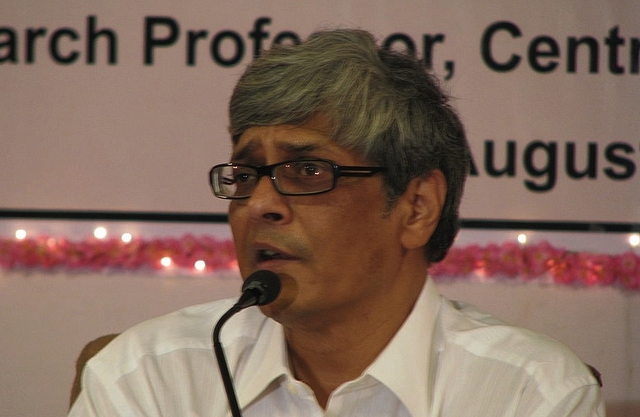
Railways: Choice And Competition - XV
How safe is rail-travel now? How can it be even safer? In the unfortunate event of an accident, how prompt is the process of compensation? That, and more, in this week’s column
The usual caveat applies.
I have mentioned the safety record of Indian Railways (IR) earlier. Let me distinguish between safety and security. While the average person uses these two words synonymously, for IR, safety means things like accidents. Security means law and order kind of issues.
The accident record of IR has improved over time. For instance, accidents per million train km used to be 5.50 in 1960-61. Today, it is 0.10. There is of course a specific definition IR uses for “accident”. It covers collisions, derailments, fires in trains, vehicles colliding with trains at level crossings and so on. This is partly driven by Sections 124 and 125 of the Railways Act (1989), which determines when the Railways pay compensation in the case of accidents.
Essentially, a passenger, or a passenger’s next of kin, can claim compensation. (You are a passenger even if you hold a platform ticket.) If you are not a passenger and happen to be run over by a train, the Railways Act doesn’t cover that. If there is an unmanned level crossing and you happen to be in a vehicle that dashes against a train (that is, you are not a passenger), the Railways Act doesn’t cover this. That doesn’t mean there is no recourse. If there is negligence on the part of IR, damages can still be claimed under tort law, or perhaps through the Motor Accident Claims Tribunal. Similar tort principles also apply to manned level crossings.
I have occasionally heard complaints about delays at the Railway Claims Tribunal (RCT). Though visible claims are usually about passengers, they can also be about goods. (By the way, fare refunds can also end up with RCT.) I think around 46,000 cases are stuck with RCT now. Reasons for the backlog are standard judicial ones – adjournments, delays in evidence and cross-examination, inadequate number of members in different RCT benches, vacancies not being filled fast enough.
While solutions are standard judicial ones, there is one issue I have sometimes wondered about. How does IR pay these claims? Essentially through taking out insurance, with United India Insurance Company. This is thus a group insurance scheme, where IR takes out insurance in bulk. Inevitably, IR becomes a party to the claim. Why don’t we bypass this, by pushing direct links between the insured and the insurance company? For instance, let a small sum from the reservation fee be earmarked towards the premium. Despite the obvious accusation of being elitist, this enables the sum insured to be staggered in accordance with the class of travel. That’s exactly the way it works in the case of air travel. More importantly, it takes IR and RCT out of the loop.
Let me return to the decline in that accident number to 0.10. That decline has happened across all the major categories – collisions, derailments, level crossing accidents, fires. I will not bore you with the detailed numbers. (You will find them in the Safety Performance document that comes with the Railway Budget papers. There is an odd anomaly that I cannot reconcile. I am only pointing it out. That 0.10 of accidents per million train km is for 2013-14 and comes from the Safety Performance document I have mentioned. The indicator used to be 0.20 in 2008-09. Also with the Railway Budget papers, there is something called a White Paper. In this, for 2012, for the same indicator, the figure given is 0.20. I suspect an old figure has erroneously been given for 2012.)
Without getting into details of the categories, you will find that proportionate declines have been much more for collisions, derailments and fires. The proportionate decline has been lower for level crossing accidents. There were 51 level crossing accidents in 2013-14.
There are 30,348 level crossings. 18,785 (62%) of them are manned. 11,563 (38%) are unmanned. Obviously, there are more accidents at unmanned level crossings and they need to be eliminated. Actually, all level crossings should go, manned or unmanned. Unfortunately, progress has been slow. For instance, only 1,102 unmanned and 301 manned level crossings were eliminated in 2013-14. At this rate, it will take more than 10 years for all the unmanned level crossings to go.
IR has also talked about road over-bridges (ROBs) and road under-bridges (RUBs). In principle, this eliminates both kinds of level crossings, manned and unmanned. In 2013-14, 210 such ROBs and 905 such RUBs were built. The Railway Budget proposes 970 ROBs/RUBs in 2015-16 and an elimination of 3,438 level crossings. I again have a slight problem with this figure.
If it is both ROBs and RUBs, the number should actually be more than 970. With ROBs/RUBs, two kinds of issues arise. First, there may sometimes be land issues. Second, who bears the costs? In the Railway Budget, Rs 6,581 crores has been sanctioned for the 970 ROBs/RUBs. IR has also talked about cost-sharing with State governments for ROBs and RUBs, something that could also apply to elimination of level crossings in general. Since States are cash starved, I am not sure how this idea is going to pan out. People have also talked about roping in local bodies (read panchayats) and using MGNREGS. All these are possible, in principle.
While a human tragedy is always a human tragedy, level crossings are now much more important than traditional issues of collisions and derailments. In the pre-digital and soft copy age, I had a series of volumes titled “Committees and Commissions of India”. Roughly half of those committees/commissions used to be about railway accidents. I haven’t seen a similar set of volumes now. But I am certain there won’t be that many on railway accidents.